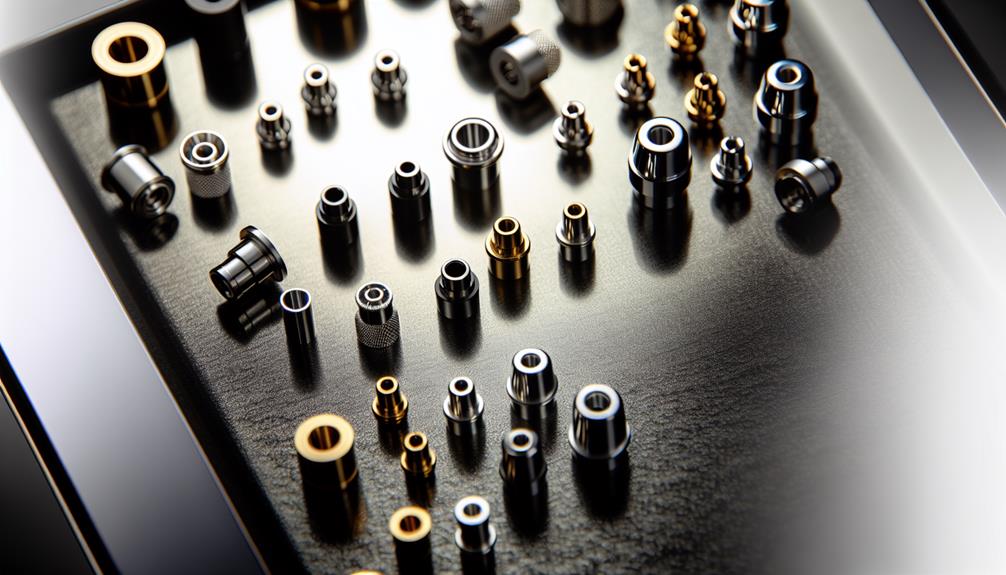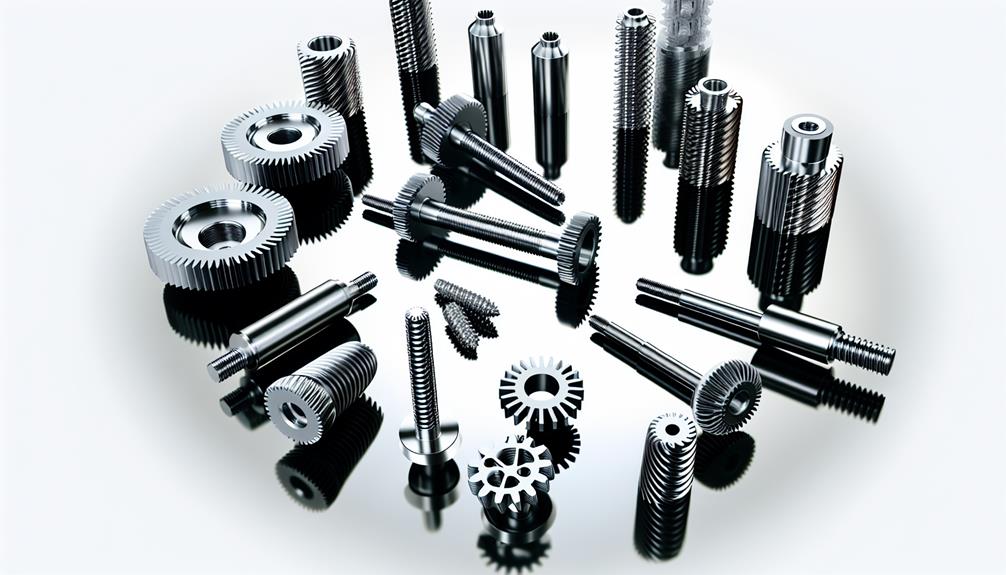Trim Screws VS Nails
Are you trying to decide between trim screws and nails for your home improvement project?
When it comes to choosing the best option, it's important to understand the advantages and disadvantages of each.
Let's explore the pros and cons of trim screws and nails, so you can determine the best option for your project.
Key Takeaways
- Trim screws offer greater strength and longevity compared to nails.
- Nails are a budget-friendly option and require quick and easy installation.
- Trim screws provide a wider surface area for better force dispersion and a smoother finish.
- It is important to consider the specific application and conduct a cost analysis before deciding between trim screws and nails.
Advantages of Trim Screws
Trim screws' strength and longevity make them a great choice for any project. They can resist rust and corrosion, while also providing a much stronger hold than nails. This is due to the fact that screws have a wider surface area than nails, and therefore disperse force more evenly. Nails, on the other hand, are prone to weakening over time as the weather and other elements cause them to rust. When compared in terms of strength, screws are the clear winner.
Not only that, but screws are also more versatile than nails. They can be used in a variety of materials, from wood to drywall to plastic. Not only can they be used for the same types of projects as nails, but they can also be used for more intricate, detailed projects. And if you ever need to remove them, unlike nails, screws can be unscrewed and removed with minimal effort.
Trim screws have many advantages over nails that make them the ideal choice for any project. They're rust-resistant, provide greater strength and hold compared to nails, and can be used for a variety of projects. Furthermore, they're far easier to remove if ever needed.
Disadvantages of Trim Screws
Despite their advantages, there are some disadvantages to using trim screws in certain projects. Firstly, they often come with a higher price tag than nails, resulting in cost implications that can make them impractical.
Secondly, there's a degree of safety concern. Screws require a higher level of expertise to install, and if screws aren't installed properly, they can create a hazardous environment.
Finally, they can take longer to install, meaning there's a higher labour cost than nails.
Advantages of Nails
While nails may not always offer the same level of structural integrity as trim screws, they have their own set of advantages.
They are quick and easy to install, and don't require any special tools, making them a great choice for those who are just learning how to do basic repairs.
Nails also tend to be more budget-friendly, and they can be used in a variety of projects around the home.
When installing nails, make sure to follow the instructions that come with the product for the best results. For example, if you're using thinner nails, make sure to pre-drill the holes for the nails. This will help to keep the wood from splitting when you drive the nail in.
Additionally, be sure to use the right type of nails for your project. Different materials will require different sizes and types of nails, so be sure to check the installation instructions before you get started.
With the right repair tips and installation instructions, you can get the job done quickly and easily with nails.
Disadvantages of Nails
Despite their advantages, nails have some drawbacks, most notably their limited strength. Additionally, there are other issues to consider when deciding between nails and trim screws. Here is a list of the three main disadvantages of using nails:
- Rusting Issues: Nails are susceptible to rusting when exposed to moisture or humidity, which can lead to discoloration or weaken their structural integrity.
- Cost Analysis: Nails are typically cheaper than trim screws, but the cost difference is often negated by the cost of repairs after the nails have corroded or become loose.
- Time and Effort: Nails require more time and effort to install than trim screws, as they need to be hammered into place; there's also more of a risk of nails slipping or becoming crooked while hammering.
When it comes to trim screws and nails, it's important to consider all of the advantages and disadvantages before making a decision. While nails have their uses, they may not be the best choice for certain projects due to their limitations. Taking the time to do a cost analysis and weigh the pros and cons will help you make the best decision for your project.
Determining the Best Option
Taking into consideration the advantages and disadvantages of both trim screws and nails, the best option for any project will depend on the specific application. A cost comparison of the two is useful in order to make an informed decision. Trim screws are generally more expensive than nails, but are also more durable and less prone to damage. On the other hand, nails are usually more cost-effective and don't require pre-drilling. Furthermore, the aesthetic impact of trim screws and nails is another important factor to consider. Trim screws are less visible and provide a smoother, sleeker finish. Nails, on the other hand, are more visible and can detract from a desired aesthetic.
| Options | Cost | Aesthetic Impact |
|---|---|---|
| Trim Screws | More Expensive | Smooth, Sleek Finish |
| Nails | More Cost-Effective | More Visible |
Frequently Asked Questions
What Materials Are Best for Trim Screws and Nails?
"Attaching methods like trim screws and nails are like two sides of a coin - each has its advantages. Depending on the surface type, one may be more suitable than the other. Consider the size, weight, and durability of the material to decide which will work best for your project."
How Long Do Trim Screws and Nails Typically Last?
The type of material and the resistance levels of screws and nails will determine how long they typically last. Galvanized options tend to be more durable and have a longer lifespan.
What Type of Tools Are Needed for Installing Trim Screws and Nails?
Woah, you need some serious tool power to install trim screws and nails properly! You'll need a drill for sizing and alternative materials, plus a hammer or screwdriver depending on the job. Don't forget the measuring tape for proper sizing!
Are Trim Screws and Nails Difficult to Remove if Needed?
Removing trim screws and nails can be difficult if damage needs to be repaired. To prevent this, use the right tools and practice good technique.
What Steps Should Be Taken to Ensure Proper Installation of Trim Screws and Nails?
To ensure proper installation, use proper spacing between screws/nails and prepare the surface before applying. Use a level to ensure straight lines and pre-drill holes for screws. Use the right type of screws/nails for the job and make sure they're driven in securely.
Conclusion
You can't go wrong with either trim screws or nails when it comes to projects. Both have their advantages and disadvantages, so it's really up to personal preference.
Still, trim screws provide a more secure fit, while nails offer a quicker and easier installation.
In the end, it's all about convenience and finding what works best for you. Whichever you choose, you'll be satisfied with the results - and the satisfaction of a job well done.




